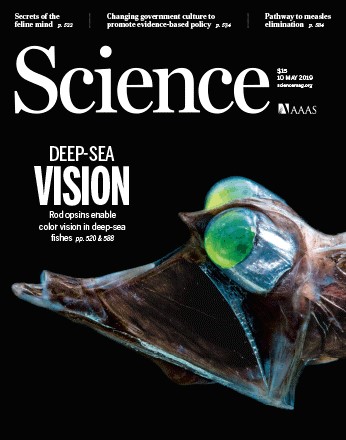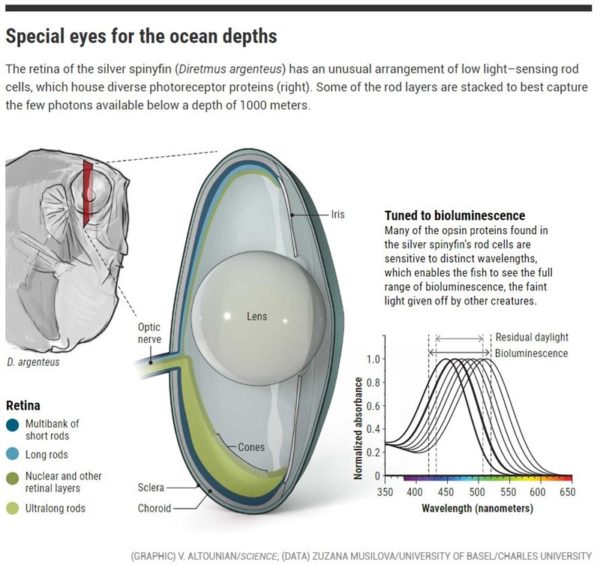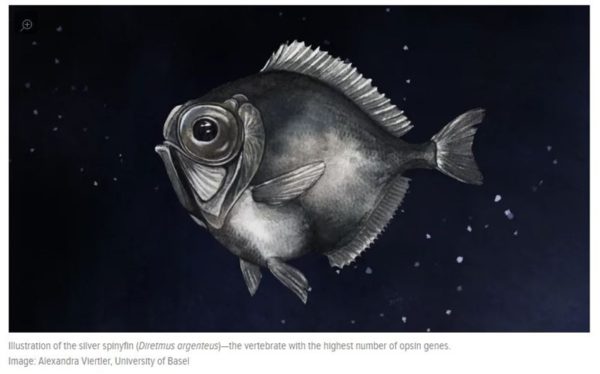
Photo: Danté Fenolio/DEEPEND/Gulf of Mexico Research Initiative
The cover of Science Magazine currently features an important discovery made by an international research team: deep-sea fish can see more than just one color.
When a Switzerland- and Australia-based research team recently needed to validate their findings regarding what colors of light a deep-sea fish species could see at up to 1500 meters below the surface, they turned to scientists at the University of Idaho. Biological Sciences Research Assistant Professor and CMCI Modeling Fellow Jagdish Patel and Biological Sciences Professors Deborah Stenkamp and Celeste Brown used Patel’s newly developed computational molecular simulation based approach to generate a mathematical model to predict color sensitivity.

Image created by Jagdish Patel.
The team was able to successfully predict the maximum wavelength of light, or color, absorbed by light sensitive proteins, called opsins, in the eye. In the case of deep-sea fish, these opsins are present in rod photoreceptors. In other species rods are not used for color vision. Thus, the research team was able to conclude that certain species of deep-sea fish may have highly sensitive, rod-based color vision. The range of sensitivity matches the dim light conditions present in the deep sea due to bioluminescence.
Blue and green dancing proteins
Movies showing molecular simulations of
blue- and green-light sensitive opsin models created by Jagdish.
“This discovery is both exciting and unexpected,” said College of Science Dean Ginger E. Carney. “We are pleased that groundbreaking discoveries by U of I researchers continue to be featured in premier research journals such as Science.”


